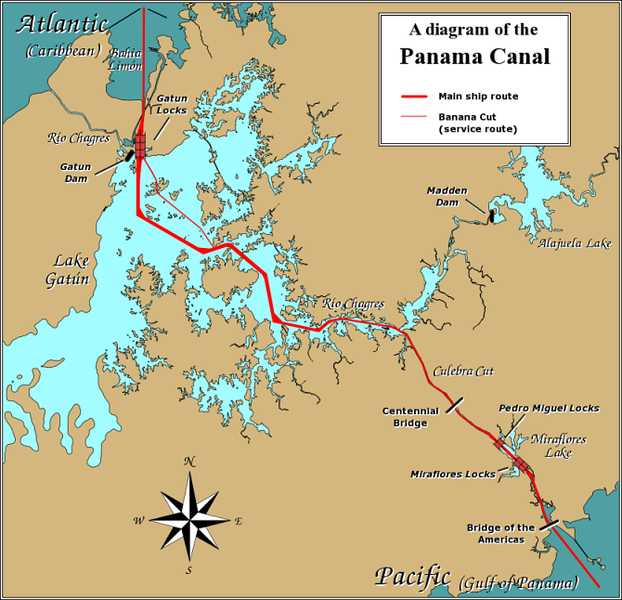
Panama Canal

This is the best map from the web to illustrate the passage of the Panama Canal. Lake Gatun was created at an attitude of 85 feet above sea level, by making a dam on the Chagres River (top left black bar on map). The six red locks at the two ends of the canal, are filled with lake water using gravity. It was a marvelous design. The total time for us to go across was 9 hours. Yes, it was slow to go through only 48 miles, but the passage saved us having to travel more than 7000 miles.
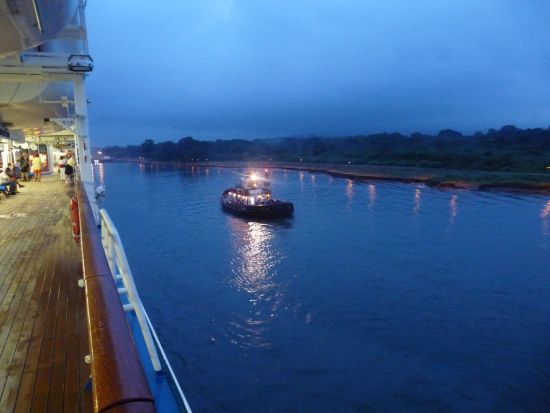 At 6am, we were in the channel leading to the locks from the Caribbean
Ocean.
At 6am, we were in the channel leading to the locks from the Caribbean
Ocean.
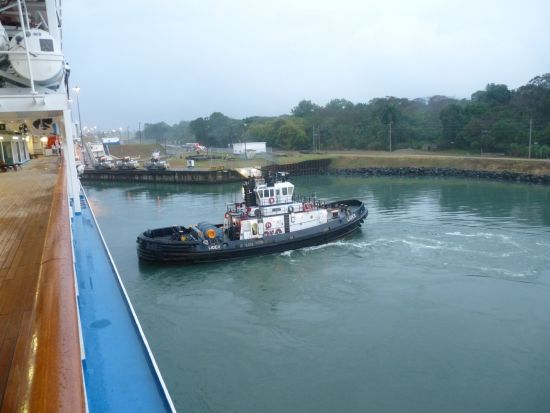 Bumping
the cruise ship into the locks.
Bumping
the cruise ship into the locks.
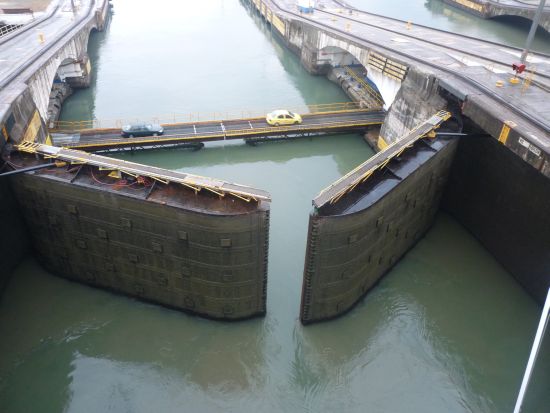 At
7am, the locks were closing, one was used as a bridge for local traffic to cross
the canal.
At
7am, the locks were closing, one was used as a bridge for local traffic to cross
the canal.
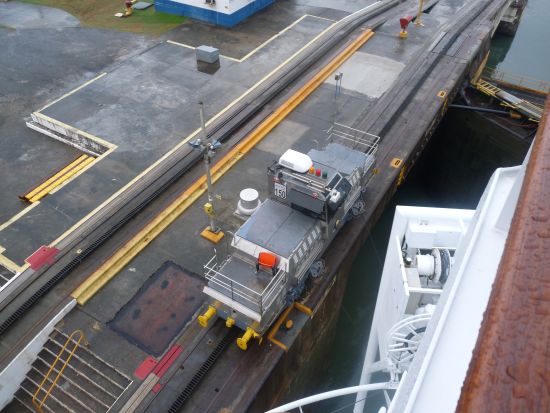 Several
rail cars, called mule, were used to guide our ship into the tight-fit canal
(~1000ft long x104ft wide).
Several
rail cars, called mule, were used to guide our ship into the tight-fit canal
(~1000ft long x104ft wide).
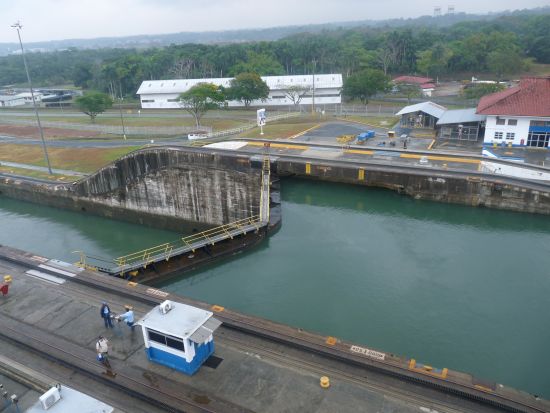 You
can see the water levels on two sides of a gate (27 feet to 31 feet depending on
the locks).
You
can see the water levels on two sides of a gate (27 feet to 31 feet depending on
the locks).
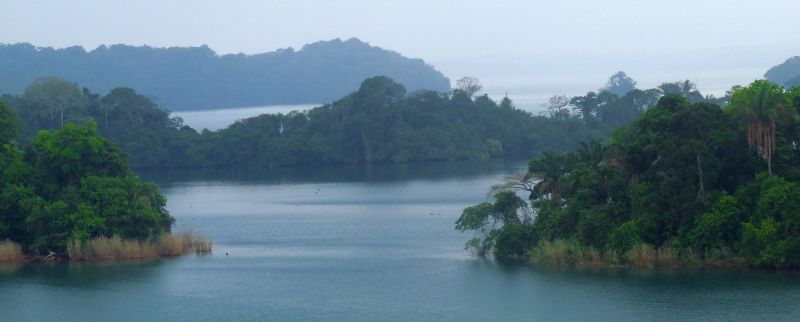
Gatun Lake
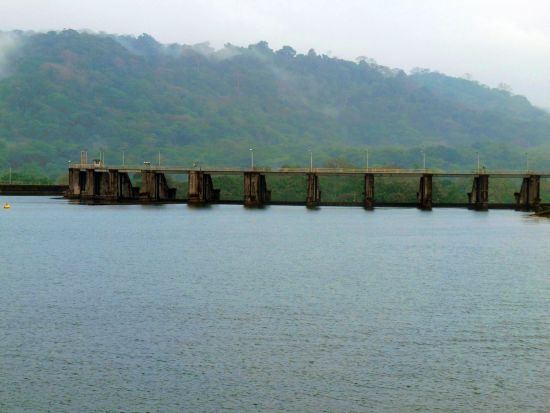 Gatun
Dam
Gatun
Dam
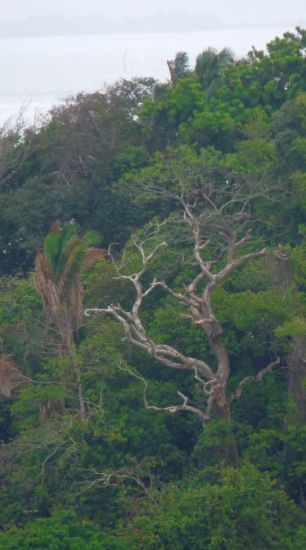
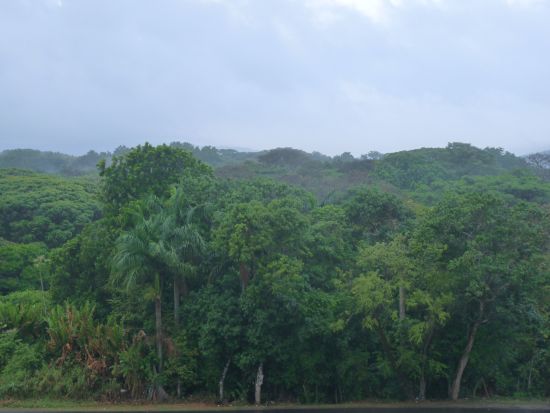
Jungle along both sides - there are some beautiful trees:


There are three kind of big birds, black vultures (not shown) and Brown pelicans and black frigatebirds:
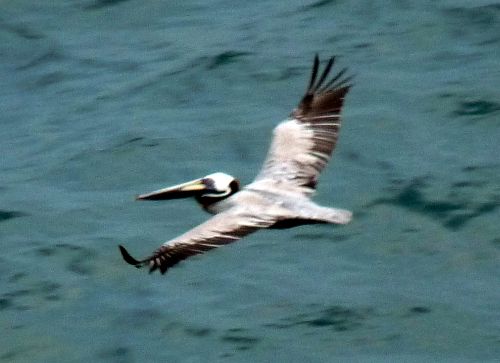
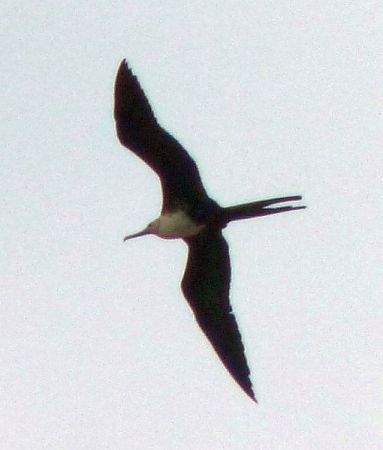
There are fixed channels for ships to travel in the lake. As you can see, this cargo ship was pretty close to our cruise ship:
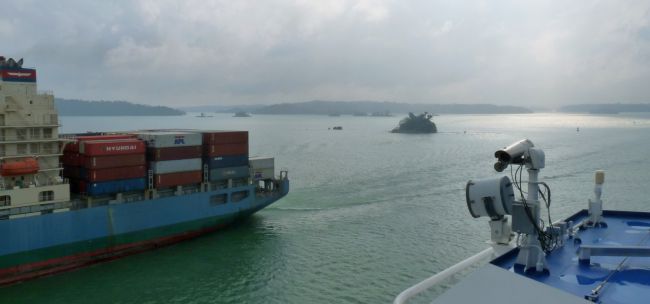
There is one Research Station at buoy marker #44:
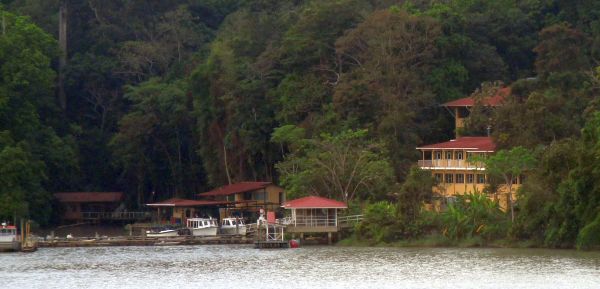
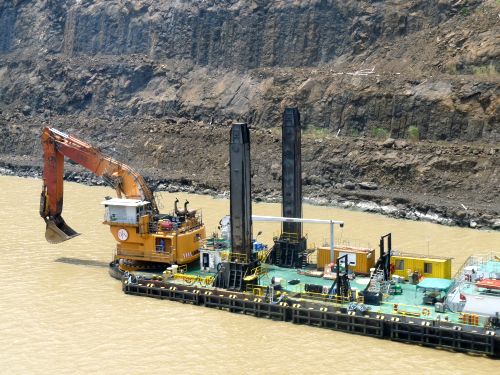 There
are areas where they are actively maintaining the channel. The water becomes muddy
and needs constant dredging.
There
are areas where they are actively maintaining the channel. The water becomes muddy
and needs constant dredging.
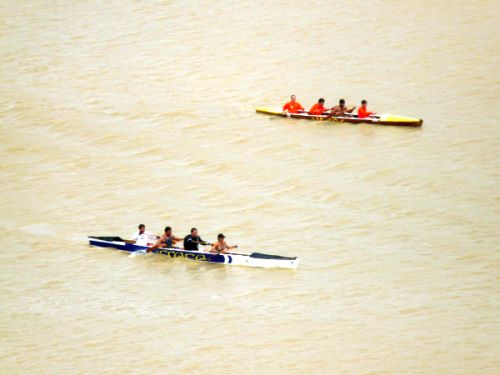 I
suppose that this is a nice exercise!
I
suppose that this is a nice exercise!
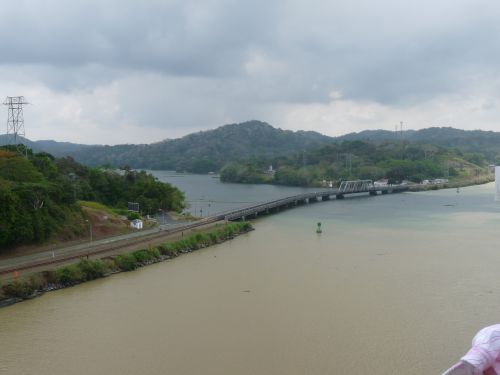 The Rio Chagres turns to the
left in the front and the water turns green! The canal goes into the Culebra
Cut.
The Rio Chagres turns to the
left in the front and the water turns green! The canal goes into the Culebra
Cut.
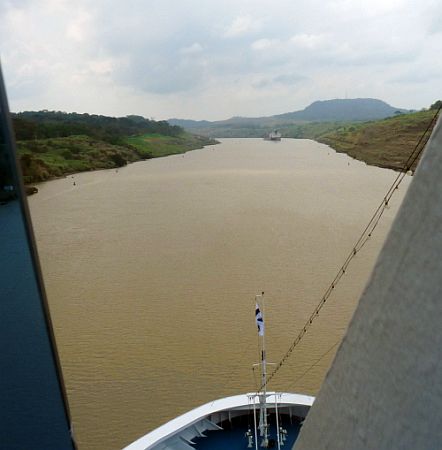 The
Culebra Cut! This was the part of the canal that required
the most digging.
The
Culebra Cut! This was the part of the canal that required
the most digging.

This is the famous Centennial Bridge. The rock on the right side in the back is the famous Gold Hill, which was supposed to be all gold. Investors were told that they would have plenty of reward even if the French failed to build the Canal.
 Miraflores Locks
Miraflores Locks
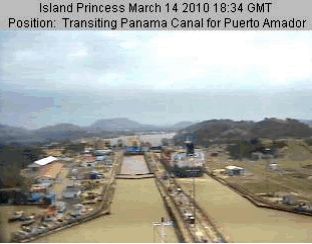 This
is the picture from the Cam-camera on the ship just when it reached the
Miraflores Locks.
This
is the picture from the Cam-camera on the ship just when it reached the
Miraflores Locks.
 Rain at Fuerte Amador, which is the port for Panama City and our stop on the
Pacific side of the Canal.
Rain at Fuerte Amador, which is the port for Panama City and our stop on the
Pacific side of the Canal.
to the next stop